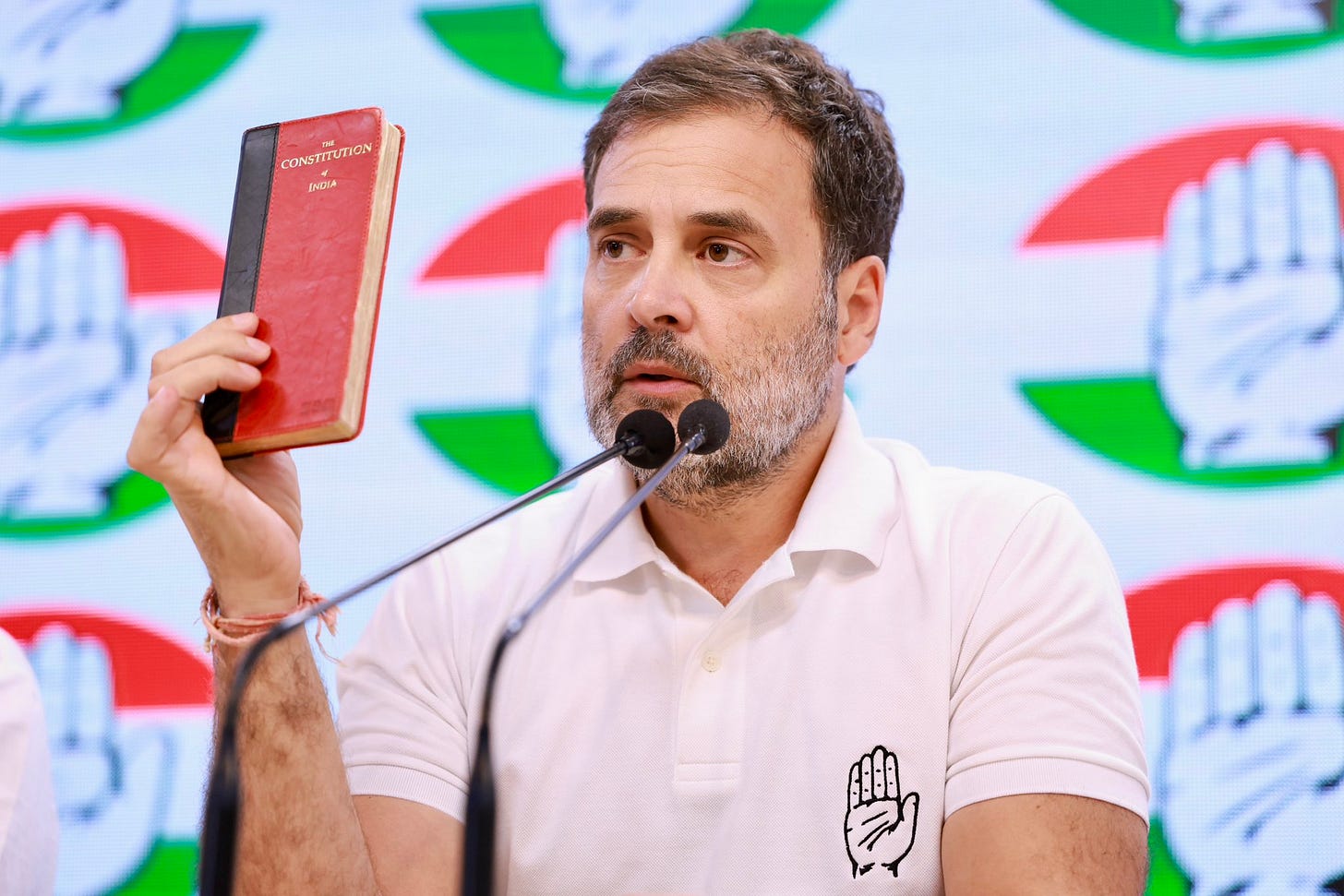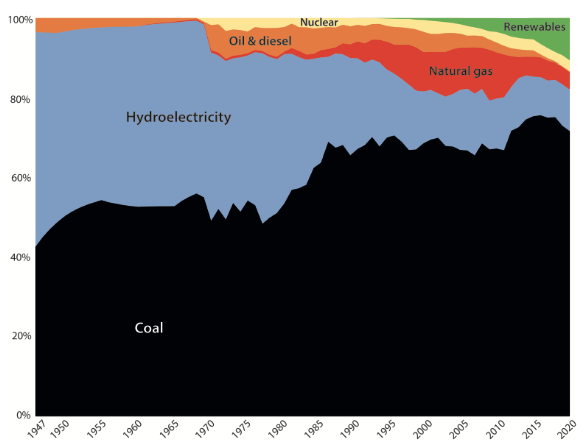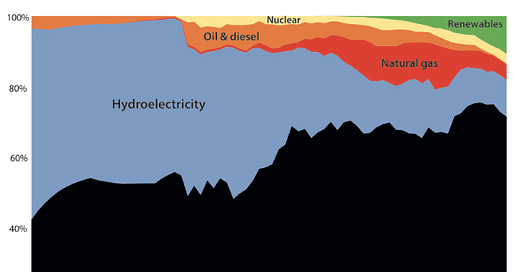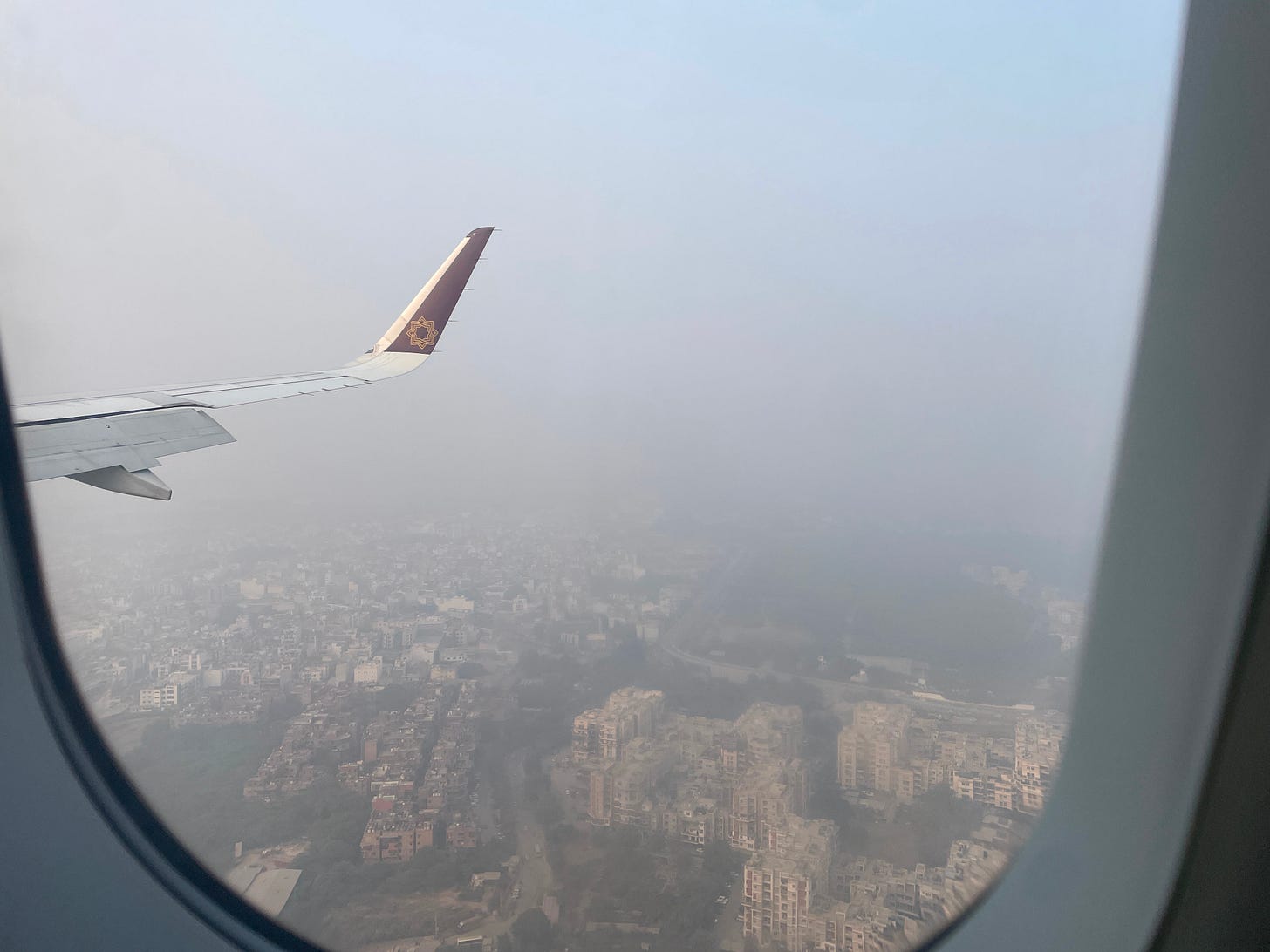2024 Highlights: Articles & Reports
Top, curated reads across climate, energy, economics, foreign policy & politics
Another ‘best of 2024’ edition for Indialog readers. This edition consists of some of the most interesting and informative India-focused journal articles and reports I read this year (again, not necessarily published this year).
The list has texts on the making of the Indian constitution, the impact of the 1970s energy crisis on India, an interview with the deputy chief of the R&AW, India’s relationship with the Soviet Union, elite migration from the Indian Institutes of Technology & so much more.
I have arranged the texts alphabetically and annotated the list in parts, highlighting why these works stood out to me. Hopefully, there’s something for everyone. Make sure to share this edition of Indialog with friends and colleagues. On to the articles —
‘Assembling India’s Constitution: Towards a New History,’ by Rohit De and Ornit Shani, May 2024, Past & Present
Note: Most scholars work “on the assumption that the participation of the Indian public during the process of constitution-making was limited” [208]. One of the primary reasons for this is that scholars have typically focused on the Constituent Assembly debates to understand how the Constitution was formed. In this article, De and Shani turn to a new and wide range of archival sources to show how “the storeyed halls of the [Constituent] Assembly were only one of multiple spaces where the Indian Constitution was being engaged with, debated, contested and produced” [211].

In a year that marks the 75th anniversary of the adoption of the Constitution and where the text has been symbolically (and powerfully) raised on the electoral trail, it behooves us to better understand its origins. This article, by two authors who have each produced remarkable books on public engagement with democracy and the constitution [A People’s Constitution: The Everyday Life of Law in the Indian Republic by De and How India Became Democratic: Citizenship and the Making of the Universal Franchise by Shani], is an invaluable contribution to the literature on constitution-making.
‘Community electrification and women’s autonomy’ by Rikhia Bhukta, Debayan Pakrashi, Sarani Saha, and Ashish Sedai, September 2024, Energy Economics
Note: A fascinating paper that assesses the relationship between electrification and women’s autonomy. India has made massive strides in increasing access to electricity for its citizens. This ‘Data for India’ piece notes that in 2000 around 60% of the population had access to electricity, and by 2021, this figure stood at 99.6%.
Access to electricity doesn’t necessarily mean that a household can rely on it. Bhukta et al note that “the reliability aspect of electrification still needs a lot of attention” as “hourly supply quality data from the Electricity Supply Monitoring Initiative (ESMI) shows that in June 2019, 63% of ESMI locations experienced more than 15 h[ours] of power outage in a day and 39% locations experiences more than 30 interruptions, each greater than 15 min” [2].
The authors use really interesting research methods to show that “reliable electrification improves several dimensions of women’s autonomy, including their mobility, reproductive autonomy, healthcare-seeking autonomy, and also autonomy related to marriage and choice of husbands” [15].
‘Deep De-carbonization and Regional Equity’ by Sanjay Mitra and Rohit Chandra, October 2023, National Institute of Public Finance and Policy
Note: A substantial chunk of the variable renewable energy (VRE) sources (i.e. solar and wind) are concentrated in western and southern India. Most of the coal is produced in the eastern parts of the country. The authors point out that India’s ambitious climate and energy targets “call for a deep de-carbonization of the electricity sector through an accelerated deployment of renewable energy and reduced use of coal” which could ultimately “exacerbate existing regional inequalities, between the states in the west and the south and those in the north and the east” [2]. More worringly, “with sharp deteriorations in fiscal deficits arising out of climate change mitigation measures, it is likely to become an essentially political issue between the Centre and the states” with limited meaningful mechanisms and avenues to negotiate these issues [21-22]. This is an informative paper that maps out an increasingly contentious Centre-state issue.
‘Late Acceleration: The Indian Emergency and the early 1970s Energy Crisis’ by Elizabeth Chatterjee, June 2024, The American Historical Review
Note: “In a trend we might call the Late Acceleration, rising Asian powers like China and India became the key planetary drivers of rising energy usage from the 1980s onward, with a further surge since the turn of the millenium” [436].

The Oil Shock of 1973-74 and the 1970s energy crisis writ large remains one of the “most studied moment of rupture in planetary energy history” [429] but curiously and perhaps unsurprisingly understudied from an Indian perspective. Chatterjee argues that the engines of the ‘Late Acceleration’ were shaped by “the pressures of resource scarcity within a highly mobilized political system mediated by state capitalism” [438]. This article looks at how the oil shock of the 1970s is tied to the socio-political landscape in India (in a period when its citizens’ expectations couldn’t possibly be met by a sputtering economy) and the 1975 declaration of Emergency. A must-read article for anyone interested in what the scholar Srinath Raghavan calls India’s Long 1970s.
The article also has mind-boggling data points. Consider the following —
“[E]ven today, India has not achieved the per capita energy consumption levels reached in North America in 1820.” [431]
“From a mere 38 kilowatt-hours of electricity consumption per capita in 1961, consumption trebled to 108 kilowatt-hours in 1976.” [460]
“NTPC [National Thermal Power Corporation] is the country’s largest power generation firm; by 2018, the biggest of its coal-fired stations, Vindhyachal (begun 1982), was the world’s second-most-polluting power plant, responsible for annual emissions equivalent to the whole country of Denmark.” [465]
‘Preventive Repression: Protest Policing in New Delhi,’ by Rajkamal Singh, Rahul Hemrajani, and Amit Ahuja, February 2024, Journal of Urban Affairs
Note: Interviews with protestors and New Delhi police, empirical studies of an original dataset of 4921 protest applications, and rigorous engagement with theories of protest policing — this article studies the “specific factors that influence the state’s decision to allow or disallow protests to proceed in a state-designated site in the urban center of New Delhi” [1-2].
The irony of ‘policing protests’ and ‘state-designated sites’ for protest is not lost on most of us, except perhaps on those in power in the state.
‘Profiles in intelligence: An interview with Vappala Balachandran,’ by Dheeraj Paramesha Chaya, January 2024, Intelligence and National Security
I can’t recommend this interview enough to those who are interested in understanding how intelligence agents operate in India, tensions between political parties and intelligence agencies, India’s intelligence relationship with its neighboring countries, and matters of accountability.
‘Strategy, Secrecy, and External Support for Insurgent Groups,’ by Avinash Paliwal and Paul Staniland, March 2023, International Studies Quarterly
It is a known fact that transnational insurgent groups operate in the subcontinent, often with the support of states. For instance, such groups received support from China and Pakistan and found sanctuaries in Bhutan, Bangladesh, and Myanmar. What determines the strategies for external support? This article sheds light on this very question with a concise table matrix to boot —

‘The Soviet Union's Partnership with India,’ by Vojtech Mastny, Summer 2010, Journal of Cold War Studies
Note: India-Russia ties have been under intense scrutiny in the West since 2022. Much of the commentary misunderstands India’s relationship with the Soviet Union and Russia.
In the article, the author notes, “over nearly forty years, Soviet-Indian relations passed through three distinct periods, coinciding with the ascendance of three extraordinary pairs of leaders, each extraordinary for different reasons — Jawaharlal Nehru and Nikita Khrushchev, Indira Gandhi and Leonid Brezhnev, and Rajiv Gandhi and Mikhail Gorbachev. The rise and decline of a political dynasty in India paralleled the same trajectory in the Soviet Union. None of the periods ended well: the first in debacles with China, the second with Indira Gandhi’s assassination, the third with the demise of the Soviet Union. How did the two improbable partners find each other in the first place, and what accounted for the longevity of their liaison?” [51]. This article on India-Soviet Union ties was really helpful in making sense of this important relationship.
‘Top Talent, Elite Colleges, and Migration: Evidence from the IITs,’ by Prithwiraj Choudhury, Ina Ganguli, and Patrick Gaule, June 2023, National Bureau of Economic Research (Working paper #31308)
Note: Every other day there is an article on the ongoing ‘brain drain’. A July 2024 Business Standard article highlighted that “the balance of payments (BoP) data shows education-related travel by Indians more than doubled in 10 years - from $2.46 billion in FY15 to $6.3 billion in FY24.” In the 2000s, this trend was notable among medical and engineering-related professionals who sought to leave the country for opportunities elsewhere (primarily in the United States). Now, according to development economist Jayati Ghosh, “India [is] losing all kinds of labor at every skill level for over a decade.”
In this context, the article by Choudhury, Ganguli and Gaule makes for an interesting read as they find that among the top 100 scorers of the Joint Entrance Exam (JEE) the admission test for the Indian Institutes of Technology (IITs) - some of the most “prestigious and highly selective technical universities with lower acceptance rates than Ivy League colleges” [2] - a staggering 62% have migrated abroad, primarily to the U.S. and for graduate school [3]. Of the top 1000 scorers, 36% have migrated abroad, lower but still sizeable.
The study concludes with a potential explanation on why the “incidence of migration rises dramatically at the very right tail of the talent distribution” — this might be because “the private return to extraordinary ability is higher in destination countries (perhaps due to agglomeration effects) than in source countries” [19].
‘Trade Liberalization and Gender Inequality in India: A Task Content of Occupations Approach,’ by Shruti Sharma, November 2023, Journal of Globalization and Development
‘Urban Heat: Rising Temperatures as Critique in India's Air-Conditioned City,’ by Camille Frazier, October 2019, City & Society
‘Who lends to the Indian state?’ by Aneesha Chitgupi, Ajay Shah, Manish K. Singh, Susan Thomas and Harsh Vardhan, August 2024, XKDR Forum (Working paper #34)
Note: Chitgupi et al find that “insurance, pensions, and provident funds added up to around 25 percent of total lending to the Indian state in 2011, which rose to 38 percent in 2021. In comparison, we find that scheduled commercial banks were at 54 percent in 2011, and dropped to 36 percent in 2021” and “just 5% of the lending to the Indian state came from voluntary persons” [4]. A highly informative article on an issue that I never paid attention to.
‘“Whose Union?” Federalism, Funding and the Ideal Citizen-Student in Indian University Education (1950-1960),’ by Nainika Dinesh, May 2024, Journal of the History of Education Society
‘Why Citizens Don't Hold Politicians Accountable for Air Pollution,’ by Shikhar Singh and Tariq Thachil, August 2023, OSF preprints
Note: Within the air quality global ranking of cities (2023), nine of the top 10 most polluted cities are in India, and a stunning 83 cities in the top 100 are in India. Bihar’s Beguasarai was the world’s most polluted metropolitan area and Delhi was the capital city with the poorest air quality. These headlines and figures seemingly move no one. When the state has failed to deliver, those who can afford it have sought privatized alternatives - be it private vehicles, education, or healthcare. Turns out you can’t privatize air (those air purifiers in our air-conditioned rooms can only do so much). What explains this apathy?
In this important paper, Singh and Thachil conducted a face-to-face survey (n=3116) with the citizens of Delhi to understand public opinion towards air pollution. The study finds that “citizens selectively blame officials along partisan lines for failures to curb pollution” and “despite broad support for mitigation policies, we find significant sensitivity to any potential private costs of mitigating air pollution” [3].
The scary specter of partisanship when it comes to pollution is only slightly offset by a hope-raising “scalable, low-cost randomized intervention that helped citizens internalize pollution’s negative externalities” conducted by the authors that “significantly and specifically increases the political salience of air pollution” [4].




